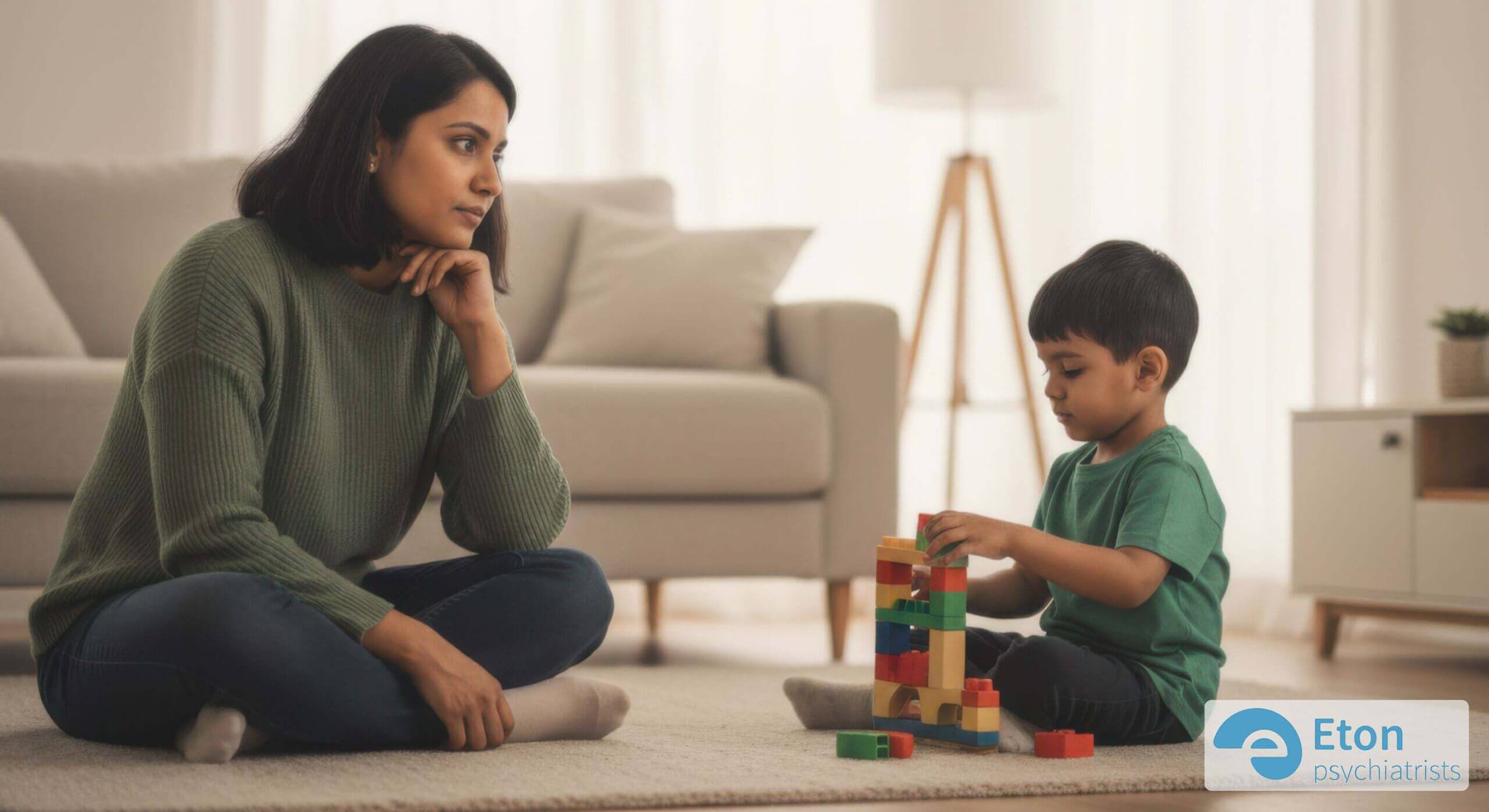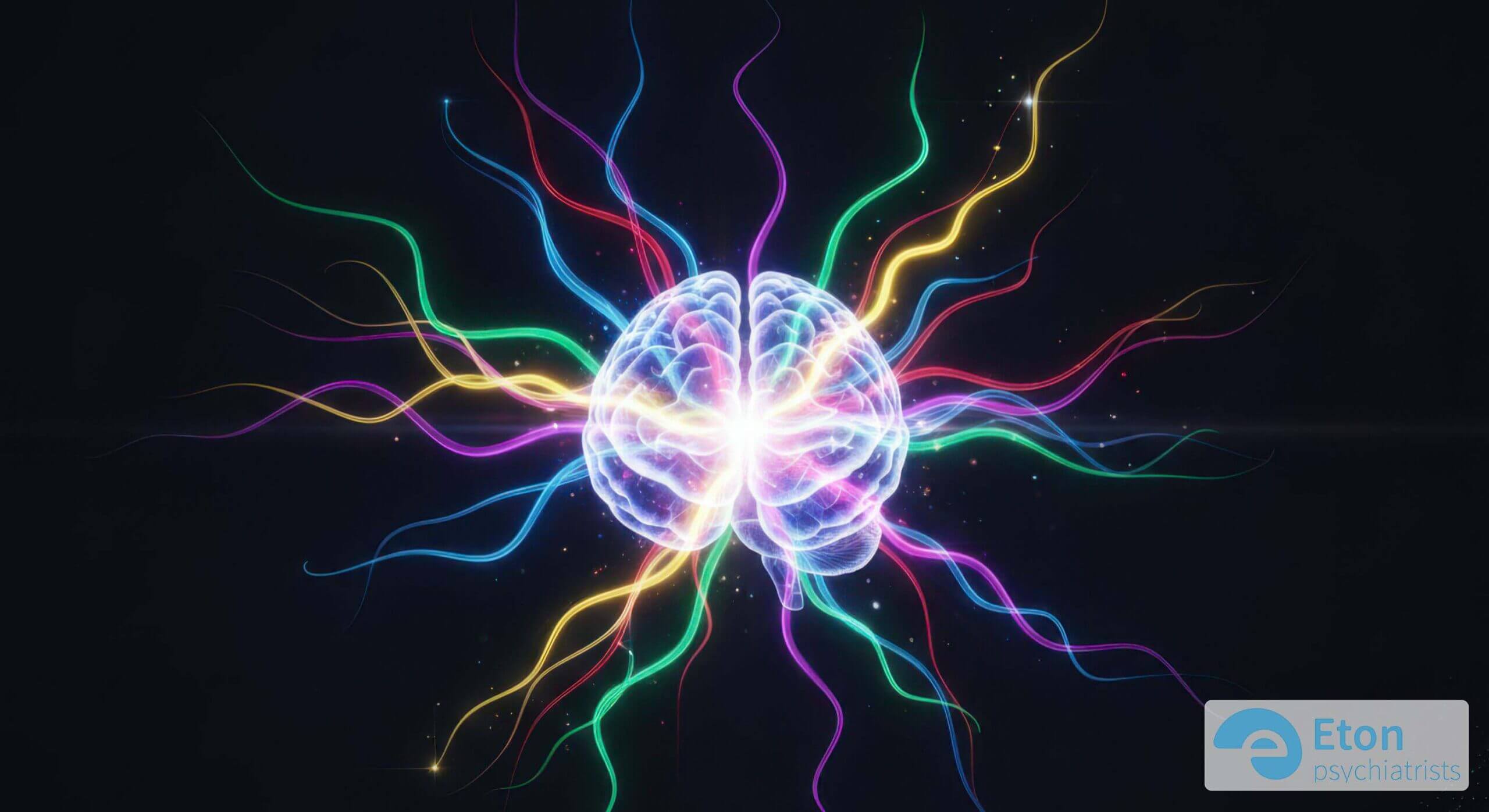
Sensory Integration: Thriving with ADHD & Autism
Listen to the Article
For those on the go or who prefer listening, you can play the full audio version of this deep dive below.

We constantly receive information from the world around us through our senses. For most people, the brain seamlessly integrates this information, allowing them to navigate daily life smoothly. However, for many individuals with ADHD and Autism, this process, known as sensory integration or sensory processing, works differently. What might be background noise to one person could feel like an overwhelming cacophony to another. A gentle touch might feel jarring, or conversely, a person might constantly seek intense physical input to feel grounded.
Understanding these sensory issues is not just about acknowledging quirks; it is fundamental to appreciating the neurodivergent experience and developing effective support strategies. This guide explains the basics of sensory integration, how it relates to ADHD and Autism, and practical ways to manage sensory challenges and create more comfortable environments.
Table of Contents
- What is Sensory Integration?
- The Spectrum of Sensory Experience: Seeking and Avoiding
- Beyond the Five Senses: Understanding the Eighth Sense System
- The Link Between Sensory Issues, ADHD, and Autism
- Creating a Sensory Diet: Tools for Regulation
- Adapting Environments: Practical Tips for Home, Work, and School
- What is Sensory Integration Therapy?
- Why Trust Eton Psychiatrists?
- Summary
- Sources
- Frequently Asked Questions
What is Sensory Integration?
Sensory integration is the neurological process that organises sensations from one’s own body and the environment, making it possible to use the body effectively within that environment. Developed by Dr. A. Jean Ayres, an occupational therapist and psychologist, the theory explains how our brains receive, interpret, and react to sensory information. When this process works efficiently, we can automatically filter out irrelevant stimuli (like the hum of a refrigerator) and focus on what matters (like a conversation). When sensory integration is different, as it often is in neurodivergent individuals, this filtering and interpretation process can be challenging.
The Spectrum of Sensory Experience: Seeking and Avoiding
Sensory issues typically manifest along a spectrum, primarily involving two contrasting responses: sensory seeking and sensory avoiding.
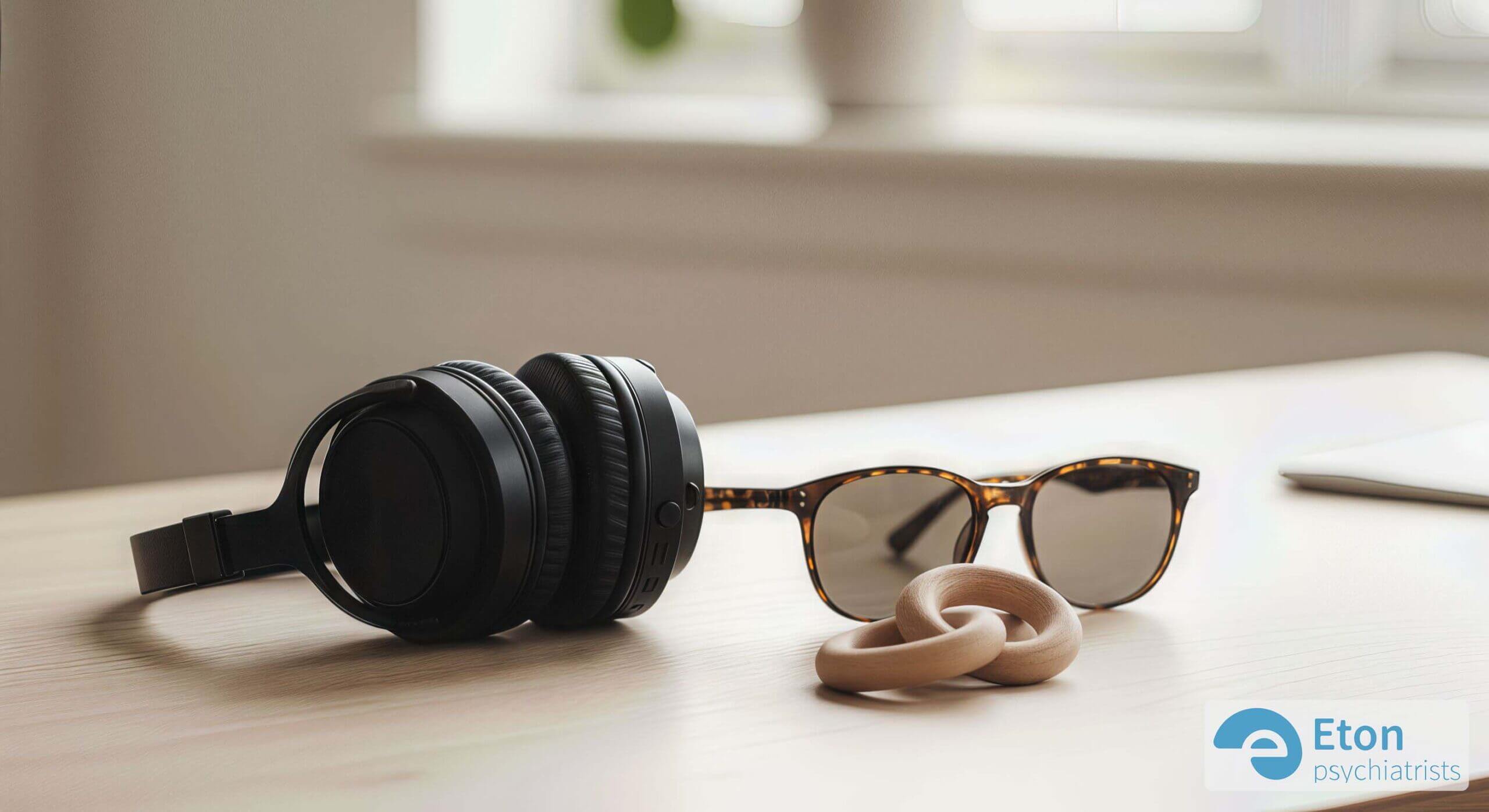
- Sensory Avoiding (Hypersensitivity): Individuals who are hypersensitive find certain sensory inputs overwhelming or even painful. They might cover their ears in noisy places, avoid certain food textures, dislike tags on clothing, or react strongly to bright lights or strong smells. Sensory avoiding behaviours are attempts to limit exposure to distressing stimuli.
- Sensory Seeking (Hyposensitivity): Individuals who are hyposensitive may seem under-responsive to sensory input and actively seek out more intense sensations to feel regulated. This might look like constant fidgeting, chewing on objects, enjoying loud music, preferring spicy or strongly flavoured foods, or engaging in physical activities like spinning or crashing. Sensory seeking behaviours help provide the level of input the nervous system craves.
It’s crucial to understand that a person can be hypersensitive in one area (e.g., sound) and hyposensitive in another (e.g., touch). Sensory needs can also fluctuate based on stress, environment, or overall well being.
Beyond the Five Senses: Understanding the Eighth Sense System
Our sensory experience extends far beyond the traditional five senses (sight, sound, smell, taste, touch). Three lesser known but vital senses play a crucial role in sensory integration, particularly for neurodivergent individuals:
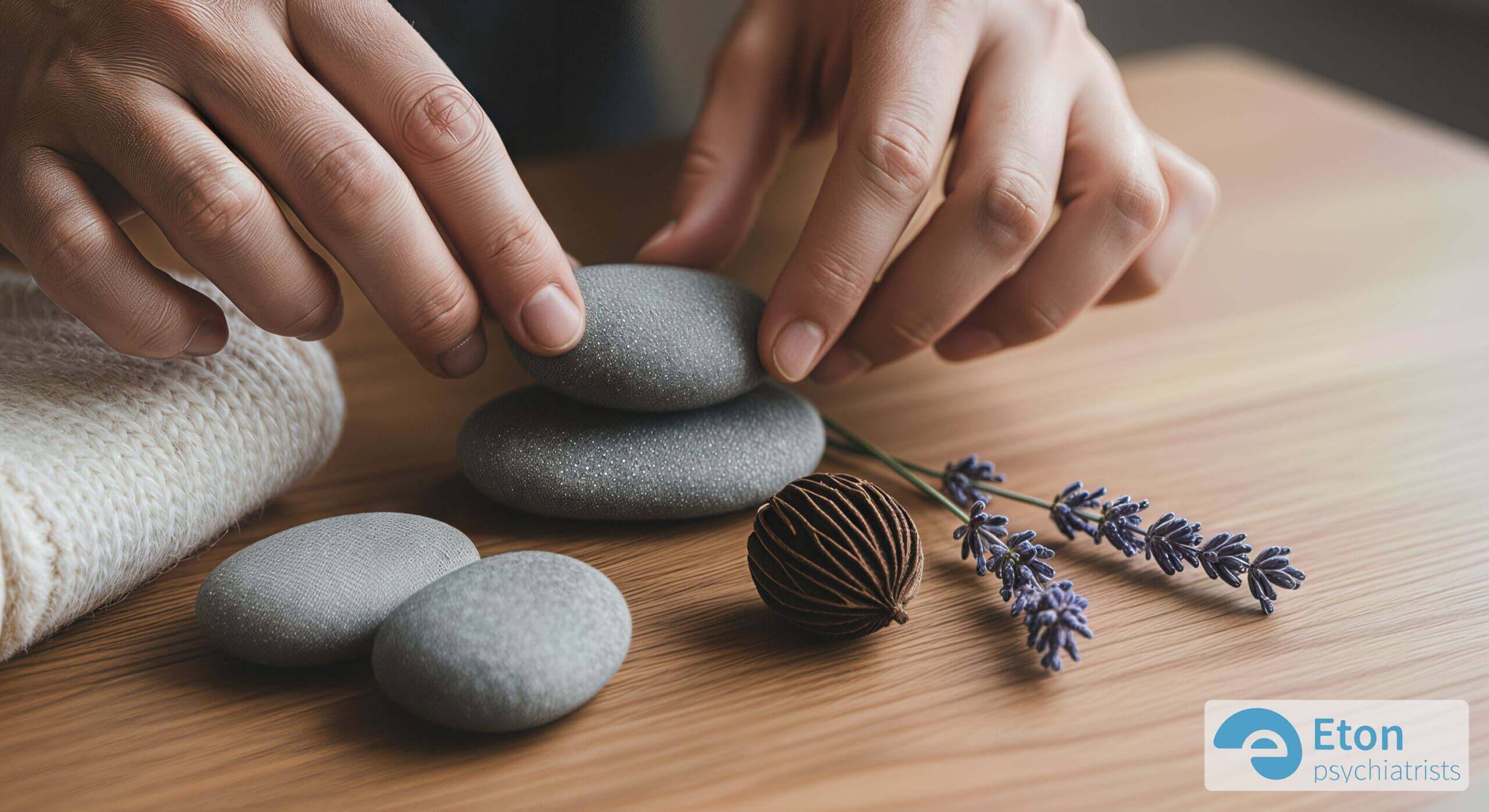
- Vestibular System (Sense of Balance and Movement): Located in the inner ear, this system tells us where our head is in relation to gravity and movement. Differences here can manifest as difficulty with balance, coordination challenges, or either a fear of or craving for movement like swinging or spinning. Vestibular input autism needs can vary widely.
- Proprioception (Sense of Body Awareness): Receptors in our muscles and joints tell us where our body parts are without looking. This allows us to move smoothly and gauge force. Individuals needing more proprioceptive input might enjoy deep pressure (like tight hugs or weighted blankets), chew gum, or engage in “heavy work” activities like pushing or pulling objects. Proprioceptive input ADHD strategies often focus on providing this grounding input.
- Interoception (Sense of Internal Body States): This is our awareness of internal signals like hunger, thirst, needing the toilet, pain, or body temperature. Difficulties with interoception can make it hard to recognise these cues, leading to challenges with self care or emotional regulation (as physical discomfort isn’t easily identified).
The Link Between Sensory Issues, ADHD, and Autism
Sensory issues are not a diagnostic criterion for ADHD, but they are incredibly common. Sensory seeking ADHD behaviours like fidgeting or needing background noise to focus are frequently observed. The ADHD brain often craves stimulation, and sensory input can help regulate attention and alertness.
For autism, sensory issues autism experiences are considered a core characteristic. Differences in sensory processing are included in the diagnostic criteria. Both hypersensitivity and hyposensitivity are prevalent, leading to significant impacts on daily life, social interactions, and overall comfort. Understanding sensory needs is fundamental to supporting autistic individuals effectively.
Creating a Sensory Diet: Tools for Regulation
Just like a nutritional diet provides the necessary ingredients for physical health, a “sensory diet” provides the necessary sensory input for neurological regulation. It is a personalised plan of activities and tools designed to help an individual manage their sensory needs throughout the day. A sensory diet for autism or ADHD is typically developed with an Occupational Therapist trained in sensory integration.
Examples of sensory diet activities might include:
- For Sensory Seekers: Jumping on a trampoline, using fidget tools, listening to upbeat music, eating crunchy snacks, using a weighted lap pad.
- For Sensory Avoiders: Wearing noise cancelling headphones in busy places, using sunglasses or dimmer lighting, choosing soft clothing without tags, having a quiet space to retreat to.
- For Proprioceptive/Vestibular Needs: Swinging, rocking in a chair, wall push ups, carrying heavy items, using a wobble cushion.
The goal is to proactively provide the right type and intensity of sensory input at regular intervals to help maintain a state of calm alertness and prevent sensory overload.
Adapting Environments: Practical Tips for Home, Work, and School
Creating sensory friendly environments can make a huge difference in managing sensory issues.
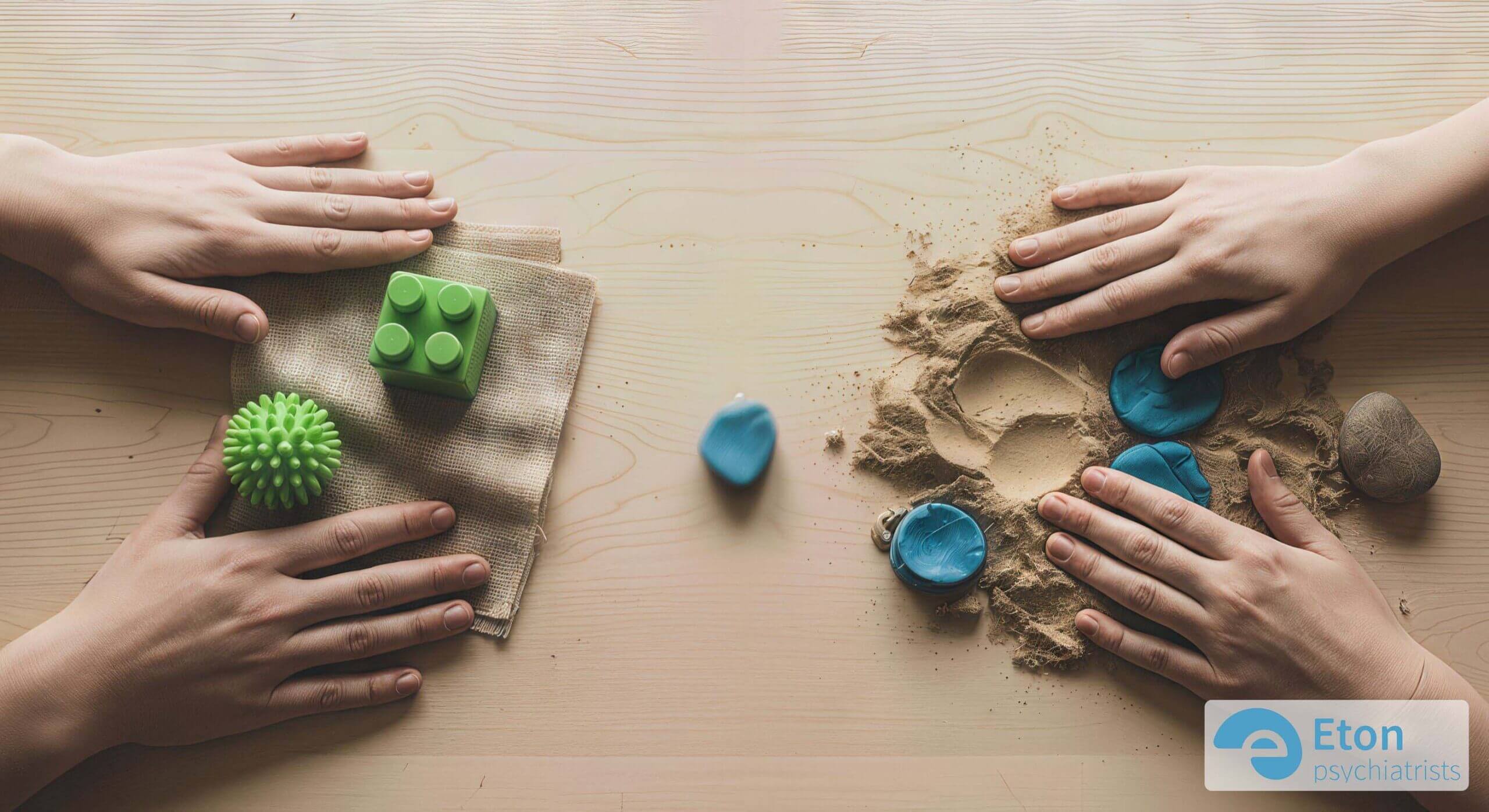
- At Home: Offer choices for seating (beanbags, wobble cushions), use dimmer lighting or natural light, minimise clutter, provide a quiet “calm down corner,” use unscented cleaning products.
- At Work: Allow the use of headphones, provide options for desk location (away from high traffic areas), use task lighting instead of harsh overhead fluorescents, permit fidget tools, offer flexible seating.
- At School (Sensory Friendly Classroom): Provide movement breaks, offer alternative seating, use visual schedules, minimise visual clutter on walls, provide noise cancelling headphones or ear defenders, allow fidget tools, create a designated quiet area.
Simple awareness and small adjustments can significantly reduce sensory stress and improve focus and participation.
What is Sensory Integration Therapy?
Sensory Integration Therapy is a specialised form of occupational therapy designed to help individuals better process and respond to sensory information. What is sensory integration therapy? It involves engaging in specific, play based activities within a controlled environment (often called a “sensory gym”) that provide targeted sensory input (vestibular, proprioceptive, tactile, etc.). The goal is not to “fix” sensory processing, but to help the brain adapt and organise sensory information more effectively, leading to improved regulation, motor skills, and participation in daily life. Occupational therapy for sensory issues is highly individualised and should always be delivered by a qualified therapist.
Why Trust Eton Psychiatrists?
At Eton Psychiatrists, we recognise that sensory processing differences are an integral part of the neurodivergent experience for many individuals with ADHD and Autism. While we are a psychiatric clinic focused on diagnosis and medical/therapeutic support, our assessments incorporate an understanding of sensory profiles. We collaborate closely with Occupational Therapists when sensory integration therapy is indicated, ensuring a holistic approach to care that addresses the whole person.
Summary
- Sensory Integration Explained: It’s the brain’s process of organising sensory input from the body and environment. Differences in this process are common in ADHD and core to Autism.
- Seeking vs. Avoiding: Sensory responses fall on a spectrum. Hypersensitivity leads to avoiding overwhelming stimuli, while hyposensitivity leads to seeking more intense input.
- Beyond Five Senses: The vestibular (balance), proprioceptive (body awareness), and interoceptive (internal state) senses are crucial for regulation.
- Sensory Diets: Personalised plans of activities and tools (developed with an OT) that provide needed sensory input throughout the day to aid regulation.
- Environmental Adaptations: Simple changes at home, work, or school (like adjusting lighting, allowing headphones, providing movement breaks) can significantly reduce sensory stress.
- Sensory Integration Therapy: A specialised OT approach using play based activities to help the brain organise sensory information more effectively.
Sources
Frequently Asked Questions
Is Sensory Processing Disorder (SPD) the same as Autism or ADHD?
No. While sensory processing differences are very common in Autism (and part of its diagnostic criteria) and frequently occur alongside ADHD, Sensory Processing Disorder (SPD) can also exist as a standalone condition. An individual can have SPD without having Autism or ADHD. Accurate diagnosis requires a comprehensive assessment.
Can adults have sensory issues?
Absolutely. Sensory processing differences are lifelong neurological traits. While coping strategies may evolve, the underlying sensory sensitivities or seeking needs often persist into adulthood, impacting work, relationships, and daily functioning. Sensory issues in adults are increasingly recognised and supported.
How do you deal with sensory overload?
Key strategies include:
1) Reducing input (e.g., leaving the noisy environment, using headphones/sunglasses).
2) Using calming input (e.g., deep pressure, rhythmic movement like rocking, focusing on breathing).
3) Having a pre-planned “escape route” or quiet space.
4) Communicating your needs (“I need a quiet minute”). Proactive use of a sensory diet can also help prevent overload.
What is an example of proprioceptive input for ADHD?
Activities that involve “heavy work” provide good proprioceptive input, which can be calming and organising for individuals with ADHD. Examples include chair push ups, carrying a stack of books, using putty or a stress ball, wearing a weighted lap pad, or chewing gum.

